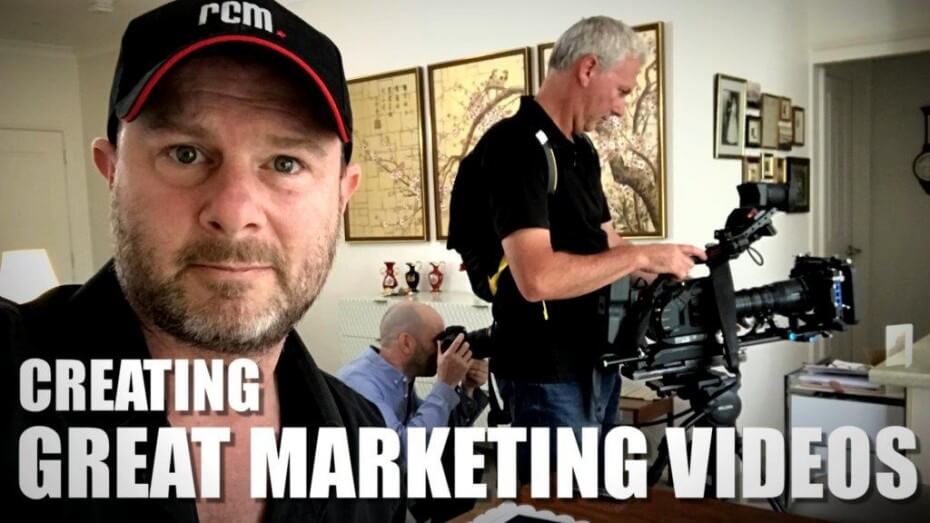Video marketing is more essential now than ever. With 87 percent of marketing professionals utilising the power of video in their content marketing, it’s never been so important to make sure your marketing videos stand out from the crowd. Here we offer some tips on creating great marketing videos to keep you ahead of the competition.
Aim it at your target market
For a video to be effective, it has to reach an audience who are likely to be interested in the product or service you’re marketing. Think about who they are and what they’re likely to want to see. This will depend on factors including age, geographic location and level of disposable income, as well as which platforms you’re uploading your video to and which your target audience are likely to use.
Get the length right
Statistically, almost two-thirds of consumers prefer to watch videos less than 60 seconds long. However, if you’re posting your video on social media, the platform you choose should have an impact on the length of your video – and it’s essential to choose the platforms that your target audience are most likely to use. This is important as different social media users like to see different lengths of video.
If your audience is young and predominantly uses Instagram, 30 seconds is the optimal length. As Instagram is a completely visual platform, users scroll through it faster than any other due to the human brain being able to process visuals faster than any other type of content.

Capturing a shot of a young couple
Facebook videos should ideally be one minute in length. Audiences engage to a slightly higher degree than on Instagram due to the mixed nature of content on Facebook, but they don’t want to spend too long on a single video before scrolling away.
Audiences on YouTube prefer videos of two minutes as they’re more likely to go to YouTube for informative or entertaining content on a particular topic. This means they prefer a more in-depth video that can provide them with the information they’re looking for.
Utilise the unique power of video
Video is more engaging than other types of content as it is limited only by your imagination. There are a number of elements you can introduce to make the video more interesting and accessible for the viewer. Graphics can be a great way of explaining difficult or dry content in a fun, easily-digestible format. Music helps to create atmosphere and emotion, which will make the viewer engage with your video more easily.
Closed captions are also an excellent marketing tool, particularly if you plan to post your marketing video on Facebook – a huge 85 percent of Facebook videos are watched without sound so you’ll have an advantage if your video can just as easily be understood with the sound off. It’s better to get your video production company to create 2 versions of your video one with and one without subtitles. Don’t rely on YouTube’s closed captions as it often gets it wrong and leads to embarrassing mistakes. Here’s a video example of subtitles built into the video, a second version was created clean and that is to use on the clients website.
Marketing Video with Subtitles from Rockmans Creative Media on Vimeo.
Stick to one message
Videos containing a lot of different messages about your brand, or marketing more than one product, are confusing for the viewer. The information isn’t likely to be retained. Keep your message simple, clear and consistent so your audience will remember it. There’s no need to cram everything into one video – you can easily create different videos for each of your products or different aspects of your brand.
Tell a good story
92 percent of consumers prefer branded ads that feel like stories. Storytelling sparks emotional responses in the brain, which make it easier for viewers to remember information more accurately. It also creates a personal connection between the viewer and the brand, which encourages purchases and brand loyalty.

Looking at the recording camera viewfinder
Humour is a popular technique employed in video marketing, but other emotional responses are also commonly used, including empathy, aspiration, nostalgia and even fear. It depends on what is appropriate for your target audience.
When it comes to social sharing, some emotional responses can help your video get shared more often than others. 76 percent of social media users say they would share a branded video if it is entertaining. This compares to 65 percent who would share an informative video, and 55 percent who would share a video that was inspirational.
Include a clear call to action
Your video has to let your viewers know what you’re expecting them to do after watching it. This could be getting them to visit your website, sign up to your email list or any other desired outcome of the video. You should always keep your CTA clear, simple and to-the-point, so viewers can easily understand what their next step should be and how to take it.
Where to position your CTA within your video is a bit trickier. In written content, the CTA always tends to go at the end – but as one-fifth of all video views are abandoned after the first ten seconds, placing your CTA at the end carries the risk of many of your viewers not seeing it at all. However, placing it too near the beginning can seem pushy, and will discourage some viewers. Generally, it’s best to place it anywhere between the middle and the end of the video.
Wherever you place your CTA, it’s important that your video is engaging enough to keep people watching until the end, as the longer they stay with your video, the longer you have to get your brand message across. An engaging and involving narrative is the best way of doing this, but there are alternatives, such as motivating viewers with details of a competition or promotion to be revealed at the end of the video. The example video below starts with an incentive give-a-way with details to come.
Marketing Video Example by RCM Melbourne
Create a meaningful title and description
The right title is important – it needs to grab the viewer’s attention and encourage them to click on the video. Using relevant keywords in the title will improve the reach of your video, as it will be more likely to show up in organic search results for its topic. However, beware of misleading “clickbait” titles – these will discourage your audience, harm your SEO efforts and hurt the reputation of your business as a trustworthy source of information.
The same goes for your description. If you want your video to rank highly in search results, it should have a well-written description that accurately describes the contents of the video, tagged with relevant keywords.
You can also boost your SEO further by creating a video sitemap – this provides Google with additional information about your video content, increasing your chances of being included in relevant search results.
Make it look professional
If you want your video marketing to stand out from the crowd, it’s essential that your video looks professionally produced.

Client watching Cameraman and Photographer at work
Remember that 61 percent of consumers say they have been discouraged from buying a product by watching a poor-quality video about it! This is why it makes sense to hire a professional video production company so you can truly capitalise on all the benefits video marketing has to offer.
For more video blogs and tips visit our blog page. For further information on us visit our home page.
…and if you thought this post was informative, please share it via the social media buttons below.

